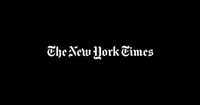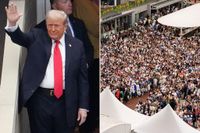The 2025 US Open men’s final, a much-anticipated clash between Carlos Alcaraz and Jannik Sinner, unfolded under the shadow of heightened security and presidential presence, leaving thousands of tennis fans frustrated and sparking debate across the tennis world. What was supposed to be a seamless grand slam finale at Arthur Ashe Stadium on September 7 turned into a logistical headache, as President Donald Trump’s attendance triggered a cascade of delays, long lines, and empty seats that marked the opening of the match.
From the outset, the day’s schedule was upended. Originally slated for a 2 p.m. EDT start, the final was pushed back by 30 minutes to accommodate enhanced security protocols. The United States Tennis Association (USTA) issued a statement explaining, “As a result of the security measures in place, and to ensure that fans have additional time to get to their seats, we have pushed the start time of today’s match to 2:30 p.m. ET.” Yet, even with the delay, hundreds—if not thousands—of fans found themselves stuck in snaking queues outside the stadium as Alcaraz and Sinner took to the court.
Security was tighter than ever at the Billie Jean King National Tennis Center. Overnight, airport-style scanners were installed outside the entrances to Arthur Ashe Stadium, requiring every spectator to empty their pockets, pass through full-body scanners, and submit to searches if alarms sounded. With only one entrance open for the entire crowd, bottlenecks quickly formed. Fans who had paid thousands of dollars for tickets were left waiting in drizzle, growing increasingly restless as the match began in front of a visibly sparse crowd.
The Secret Service acknowledged the inconvenience, stating, “We recognize that enhanced security for the President’s visit to the US Open may have contributed to delays for attendees. We sincerely thank every fan for their patience and understanding. Protecting the President required a comprehensive effort, and we are grateful to the US Tennis community and our New York public safety partners for their essential collaboration and support.”
Despite these reassurances, many fans expressed frustration at the lack of clear communication. While the USTA reported sending emails to ticket holders on Friday, Saturday, and Sunday, and a push notification through the US Open app on the morning of the final, several attendees told reporters they were unaware of the extra security measures until they arrived. “On an airplane when you have a delay, you get notifications,” said Diana Diaz, a fan from Florida. “This is not a delay. This is something else.” Others echoed her sentiments, lamenting that they would have headed straight for the security line instead of browsing shops and concession stands had they known the extent of the wait.
Inside the stadium, the atmosphere was surreal. President Trump, attending his first US Open since 2015, arrived at Arthur Ashe Stadium after flying in from the White House, with Air Force One touching down at LaGuardia Airport. Roads around the Billie Jean King tennis center in Flushing Meadows were closed to prepare for his arrival. Trump was seen waving from his private suite about 30 minutes before the intended start time, flanked by Cabinet members and family. His appearance on the stadium’s big screen during the national anthem drew a cacophony of boos and cheers, a microcosm of the divided public sentiment surrounding his presence. The USTA, in anticipation of such reactions, requested broadcasters to “refrain from showcasing any disruptions or reactions in response to the President’s attendance in any capacity.”
Martina Navratilova, four-time US Open singles champion, did not mince words regarding the situation. Speaking on Sky Sports, she remarked, “Let’s spare a thought for the thousands of people waiting outside in the drizzle—it’s been raining on and off—and they’ve paid thousands of dollars for these tickets. It’s not that he’s coming that’s the problem, it’s that they only made one entrance for the whole crowd.” Navratilova went further, calling the setup “insane,” and expressing concern for both players, who had to adjust their pre-match routines. “They really need to time it just right, to eat just right, to warm up. Both are in the same boat, but it’s really unfortunate.”
Both Alcaraz and Sinner were instructed to arrive at the grounds earlier than usual to avoid disruption to their preparations. Sinner, reflecting on the delay after the match, downplayed its impact. “No, it was fine. They told us in a huge amount before that the match start at 2:30, so we were not warming up twice. It was all fine,” he said. Alcaraz’s coach, Juan Carlos Ferrero, added, “We move a little bit later the warm-up. We supposed to start warming up 1:30, and at the end we move it to 2:00. He had lunch before we know that the match has moved to 2:30, so we couldn't move the lunchtime. We don't do too much. Just wait and don't think too much.”
As the match finally got underway at 2:37 p.m. local time, the stadium was still peppered with empty seats, especially in the upper tiers. Sinner admitted he barely noticed the crowd’s absence at first, saying, “I wasn’t actually realising it that much. I felt like it was still very loud. I saw some empty seats, but I had no doubts that they’re going to be full and packed. It’s not a thing where I was, like, worried that no people will come. No, it was an amazing atmosphere.”
Throughout the opening set, fans continued to trickle in, with an influx arriving at the change of ends after the third game. Those still outside watched the action unfold on big screens above the entrance, trying to make the best of a frustrating situation. Broadcaster Chris Fowler, commenting for ABC, observed that it appeared fans were “not adequately told to be prepared for this.”
Trump’s presence remained a focal point throughout the final. His face reappeared on the jumbotron after Alcaraz took the first set, again eliciting a mix of boos, cheers, and applause. The USTA’s efforts to control coverage of crowd reactions underscored the political undercurrents running through this year’s championship.
Ultimately, the tennis itself delivered drama worthy of a grand slam. Alcaraz, undeterred by the off-court chaos, triumphed over Sinner in four sets, reclaiming the World No. 1 ranking and capturing his second US Open title. But for many, the day will be remembered as much for the unprecedented security measures and fan frustrations as for the brilliance on the court.
As the dust settles on this year’s US Open, questions remain about how major sporting events should balance security, communication, and the fan experience—especially when high-profile political figures are involved. For now, fans and players alike will be hoping that future finals focus squarely on the tennis, not the turnstiles.


